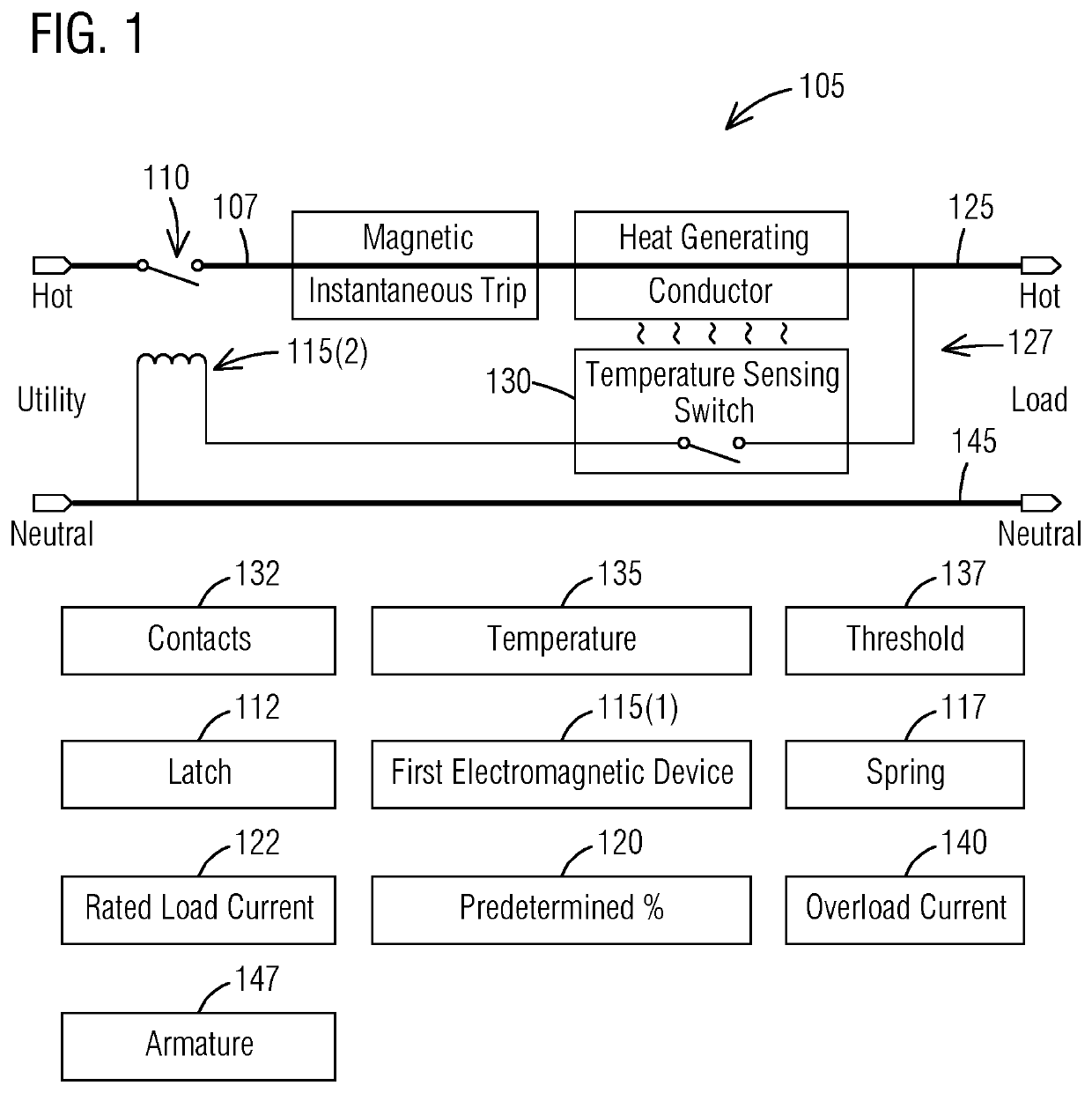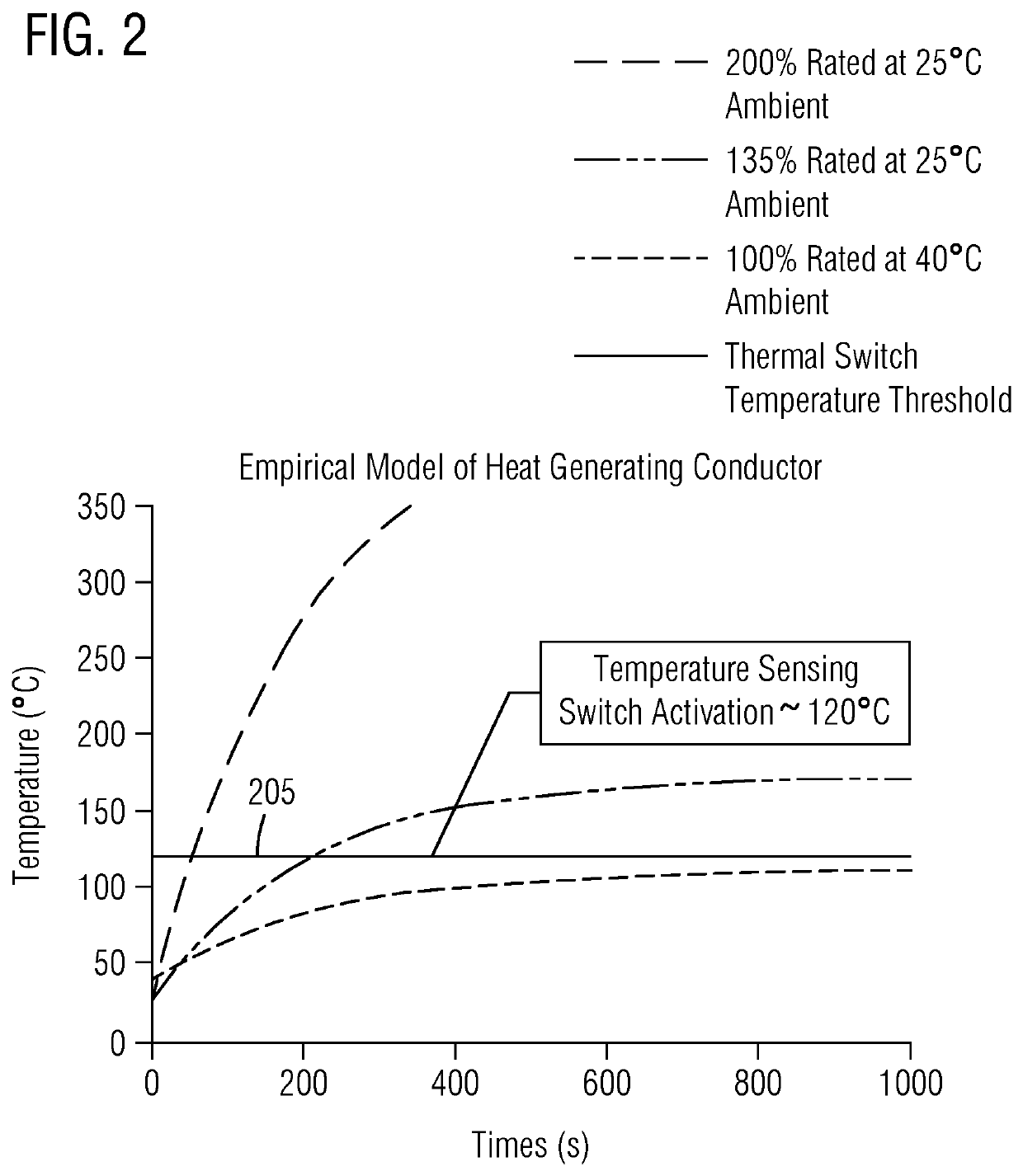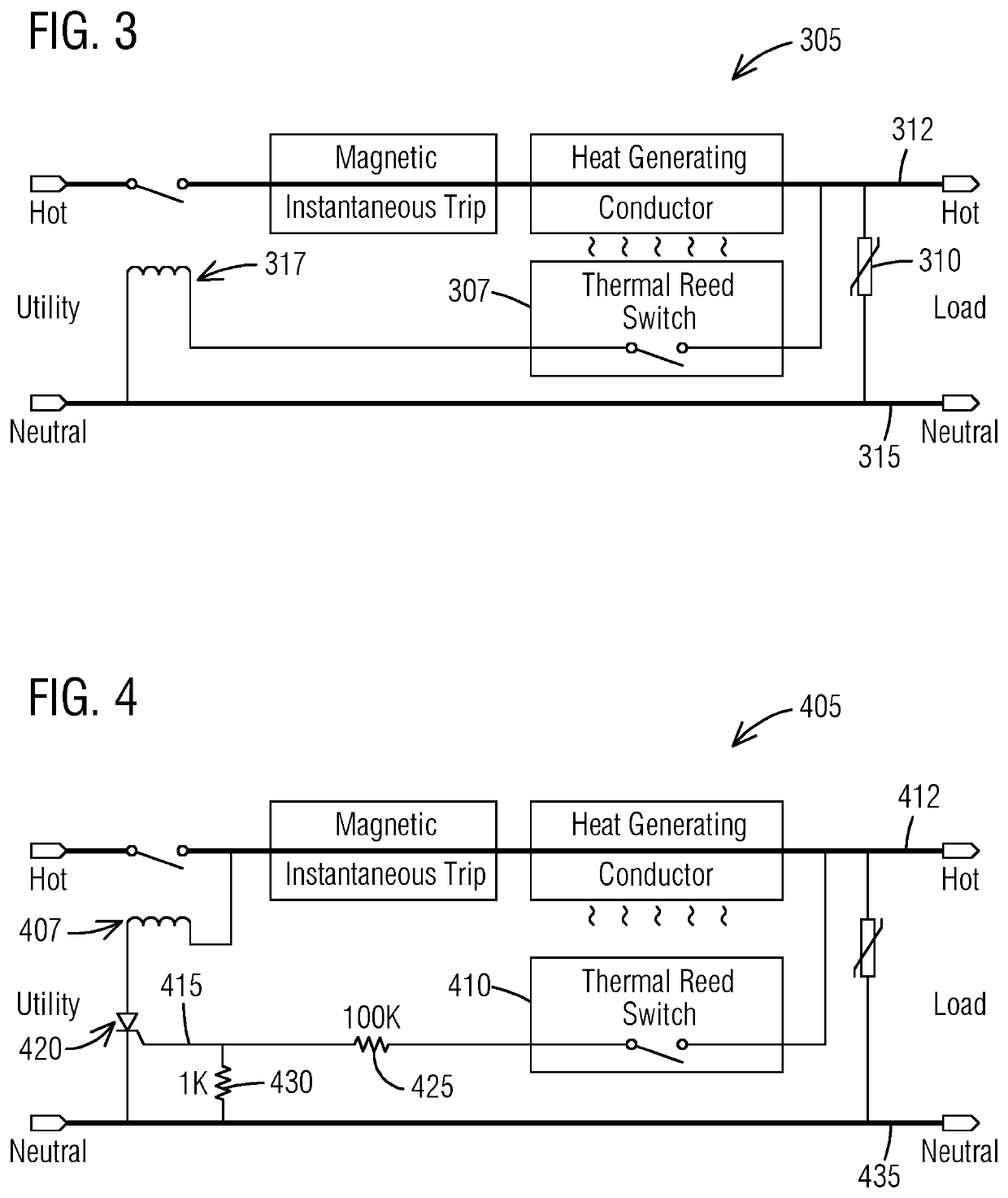Overload current detection in a circuit interrupting device
a circuit interrupting device and overload current technology, applied in the direction of protective switch details, instruments, heat measurement, etc., can solve the problems of high precision, small displacement achieved by warping of bimetallic devices, and difficult to achieve precise temperature, etc., to achieve fast switching response, sharp drop in magnetic permeability, and precise temperature
- Summary
- Abstract
- Description
- Claims
- Application Information
AI Technical Summary
Benefits of technology
Problems solved by technology
Method used
Image
Examples
Embodiment Construction
[0017]To facilitate an understanding of embodiments, principles, and features of the present invention, they are explained hereinafter with reference to implementation in illustrative embodiments. In particular, they are described in the context of a circuit interrupting device without a bimetallic overload current detection mechanism. A circuit interrupting device comprises a thermal overload current detection mechanism including a temperature sensing switch. For example, a circuit interrupting device includes a Thermal Reed Switch that utilizes a new soft magnetic material called Thermorite®. The Thermal Reed Switch has a fast switching response and is accurate to within ±2.5° C. The highly inefficient and costly iterative process of calibrating a bimetallic overload current detection mechanism is eliminated, along with wasted material. Embodiments of the present invention, however, are not limited to use in the described devices or methods.
[0018]The components and materials descr...
PUM
| Property | Measurement | Unit |
|---|---|---|
| temperature | aaaaa | aaaaa |
| temperatures | aaaaa | aaaaa |
| magnetic force | aaaaa | aaaaa |
Abstract
Description
Claims
Application Information
 Login to View More
Login to View More - R&D
- Intellectual Property
- Life Sciences
- Materials
- Tech Scout
- Unparalleled Data Quality
- Higher Quality Content
- 60% Fewer Hallucinations
Browse by: Latest US Patents, China's latest patents, Technical Efficacy Thesaurus, Application Domain, Technology Topic, Popular Technical Reports.
© 2025 PatSnap. All rights reserved.Legal|Privacy policy|Modern Slavery Act Transparency Statement|Sitemap|About US| Contact US: help@patsnap.com



